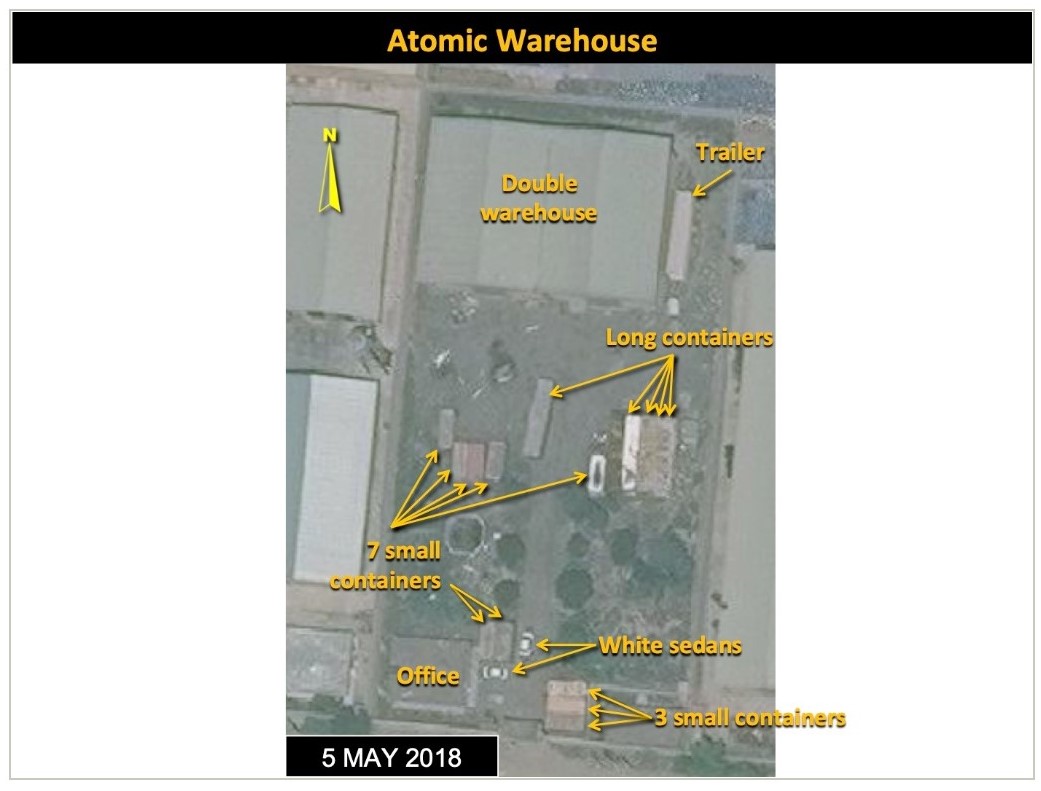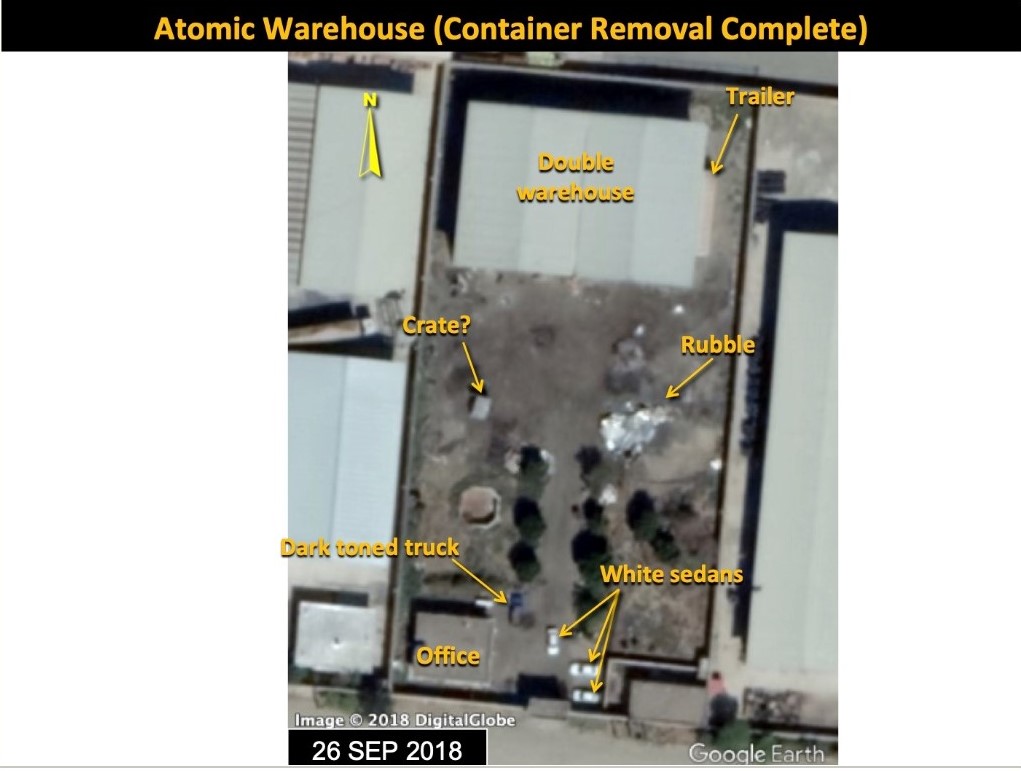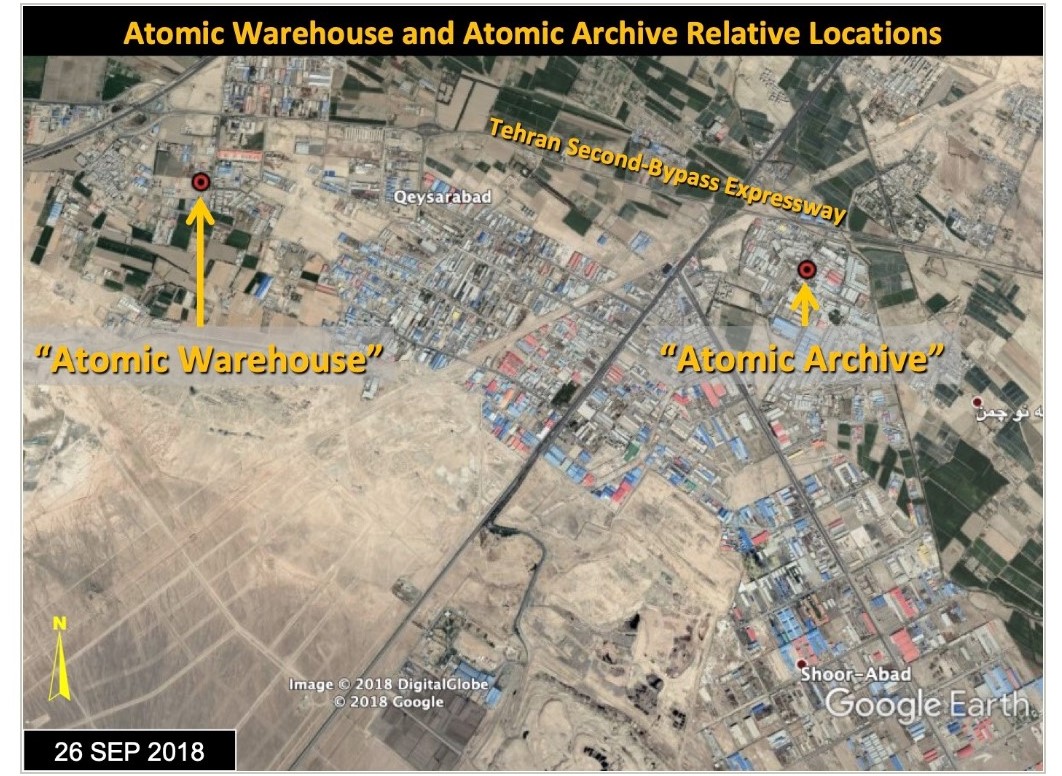Reports
Brief Response to IISS Piece
by David Albright and Andrea Stricker
April 8, 2019
On April 8, Mark Fitzpatrick, Associate Fellow of the International Institute for Strategic and International Studies (IISS), posted a short piece entitled, “The IAEA Doesn’t Have Inspection Superpowers in Iran.” This posting was in response to our report from April 4, “IAEA Visits Turquz Abad: Too Little, Too Late?” Turquz Abad is a warehouse in the Turquz Abad district of Tehran, Iran and was identified by Israel in September 2018 as secretly holding nuclear-related equipment and nuclear material; it has since been dubbed the “atomic warehouse.” We have several comments on Mr. Fitzpatrick’s criticisms.
First, the point of our stipulation that it is “too little, too late” to find anything at Turquz Abad after Iran moved the contents is that at issue were portable shipping containers in an open-air site that were themselves moved, and they allegedly contained equipment and materiel related to Iran’s nuclear weapons efforts. Whatever nuclear material may show up in samples long after the fact will be difficult to evaluate or link to any equipment stored at and then removed from the site.
Fitzpatrick focuses on how the IAEA (with Iran) captured uranium samples at Parchin, emphasizing that particles can be found despite the passage of time. Finding this uranium evidence mattered for the IAEA at Parchin because Iran had said no uranium was used there, and the IAEA knew what equipment was used in the buildings and subsequently removed by Iran.
Unjustifiable IAEA delay is the crux of our concern. The containers were moved from Turquz Abad as the IAEA was watching them disappear in real time over the summer of 2018 (see Figures 1 and 2 for a before and after comparison). Commercial satellite imagery we received also may have showed the Iranians burning items at the site in June. Israel tipped off the IAEA quickly when it realized Iran was moving containers off-site. After Israel’s discovery of the Nuclear Archive in a warehouse and its similar discovery of the nearby Turquz Abad warehouse, Israel had credibility on this tip (see Figure 3).
Second, if Mr. Fitzpatrick still seeks to defend the IAEA for taking its time in such an egregious case, that is his prerogative, but it is certainly not past IAEA precedent when the IAEA had credible information, often from a single country, about suspicious activities and needed to act quickly. In North Korea, Libya, and Iraq in the 1990s, the IAEA moved much quicker after receiving a tip than it did in this case. Furthermore, it is becoming far too routine for experts to refer to the Iraqi WMD debacle in the 2000s as an excuse for inaction and delay in every case. Worryingly, this case reminds us of the IAEA in Iraq in the late 1980s and into 1991, when, through its refusal to use its safeguards rights and countries actively resisting it doing so, the IAEA was completely inept at finding Iraq’s massive, covert nuclear weapons program.
Israel has generated very credible information, and there is simply no excuse for standing by and watching containers allegedly full of nuclear-related equipment and material related to an undeclared nuclear weapons program disappear over the course of three months.
Today, trying to find those containers, and more importantly what was inside them, will be very difficult. By not acting more quickly, the IAEA lost a golden opportunity to make progress on the fundamental question of whether Iran has been hiding equipment and materiel for a nuclear weapons program that it can draw on at a later date or use to refine hidden activities. We are not calling for superhero vigilantes in a nuclear inspection authority, nor instantaneous action, but acting within reason on credible information (such as containers leaving a suspicious site over months) should be something the world can count on from an international agency tasked with preventing proliferation.

Figure 1. May 5, 2018 image obtained by the Institute showing the presence of a total of 15 containers at the alleged atomic warehouse site at Turquz-Abad. © Digital Globe 2018

Figure 2. Google Earth imagery dated September 26, 2018 showing all 15 shipping containers originally at the site had been removed, and only a single trailer and one possible crate remain in the open area, along with a pile of rubble. Source: Digital Globe via Google Earth

Figure 3. Location of the “Atomic Warehouse” relative to the “Atomic Archive” site and central Tehran to the north. Source: Digital Globe via Google Earth

 twitter
twitter